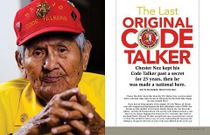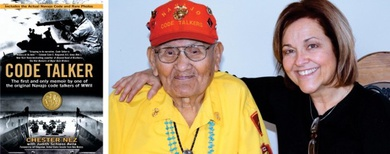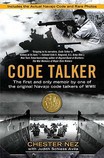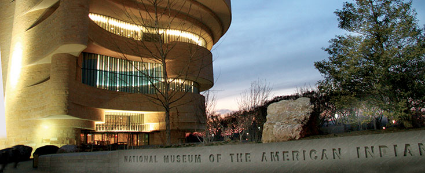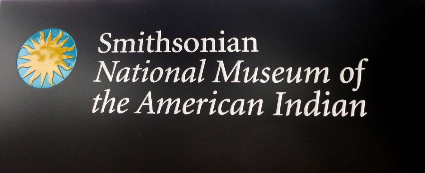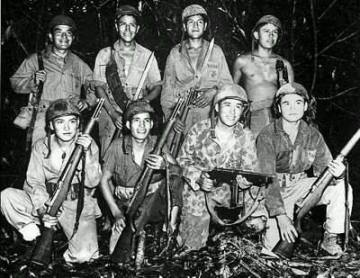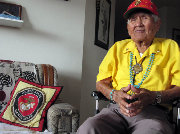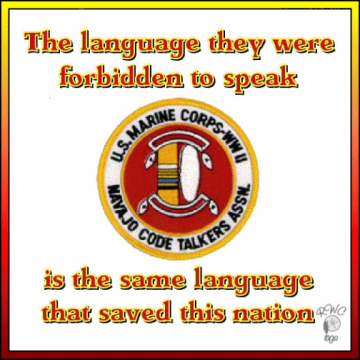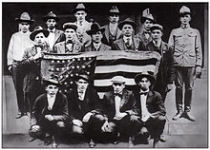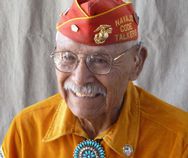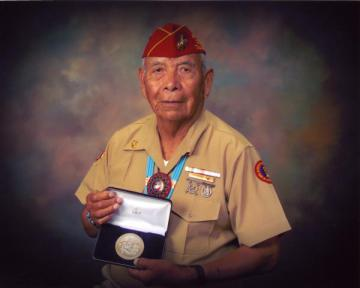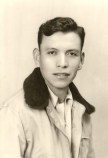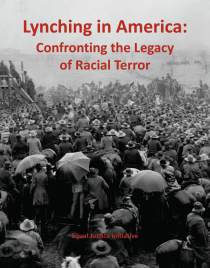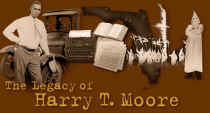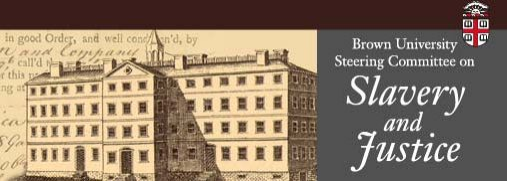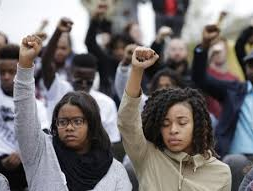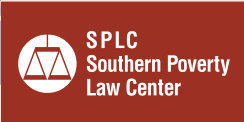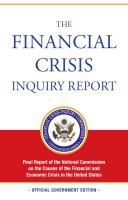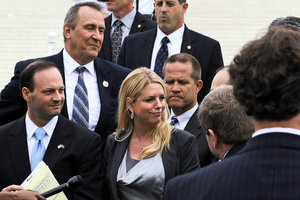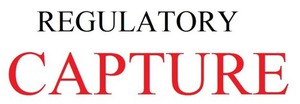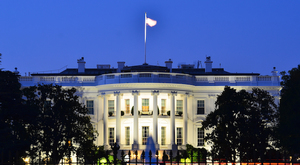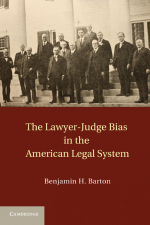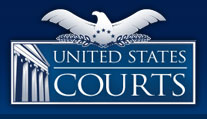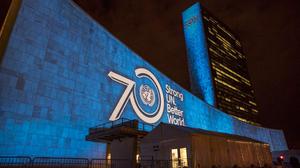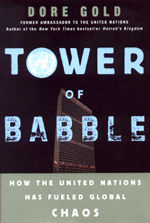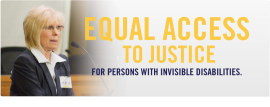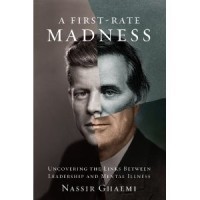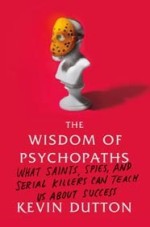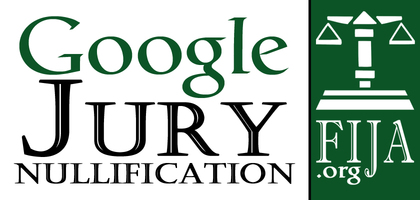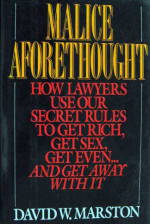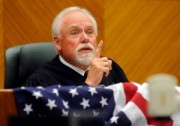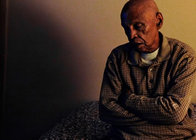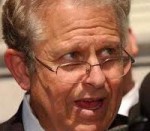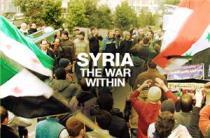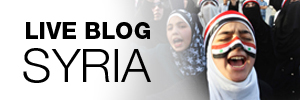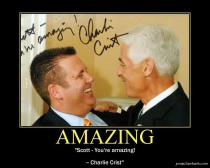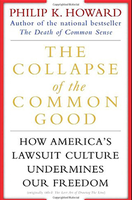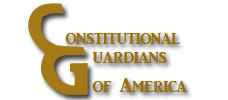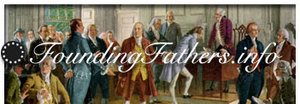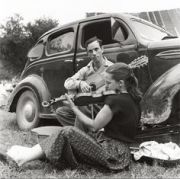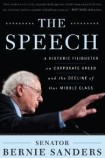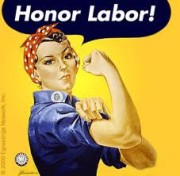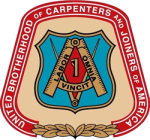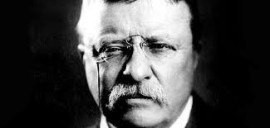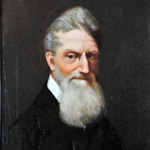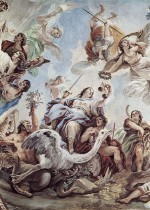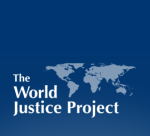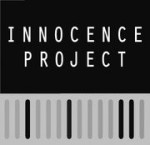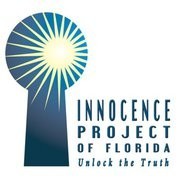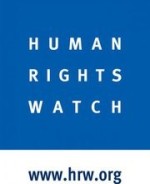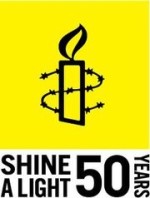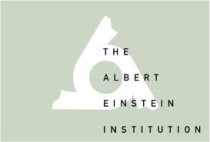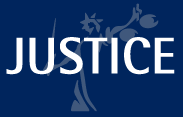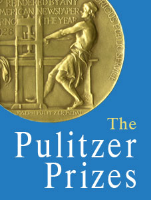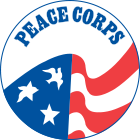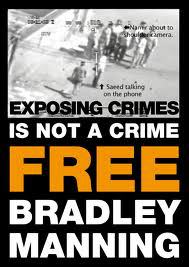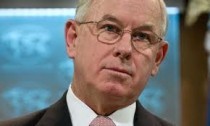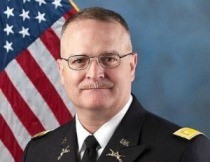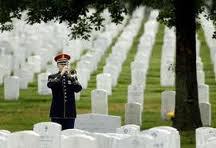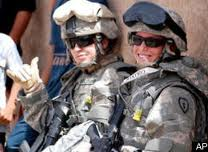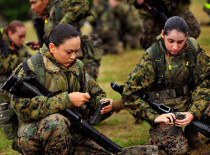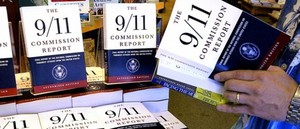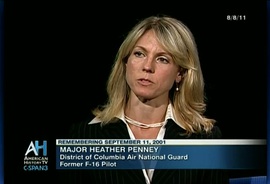Navajo Code Talkers
Facebook Code Talker: Memoir of WWII Navajo Marine Chester Nez
Chester Nez, last of the original 29 Navajo Code Talkers
Code Talker
by Betty Ried
Twenty-nine Navajo Marines created an unbreakable military code used during World War II. Memories of those glory days are fading, and Chester Nez is the last living original Code Talker.
Update: Chester Nez died June 4, 2014.
Chester Nez is the last of the original 29 Navajo Code Talkers. All the rest of the U.S. Marines who created the first unbreakable code that baffled the Japanese during World War II have died.
Nez has been asked to tell his own story many times. When he tells it in English, he refers to pre-written answers his family keeps on a sheet of notebook paper. The questions are almost always the same.
But when he speaks in Navajo, in the vivid light of the late afternoon, the colors of his memories are saturated, the edges sharp.
He remembers the words that helped slay the enemy even as they pierced his own sacred beliefs. He remembers the words that helped protect him on the fields of battle. And he remembers a full life.
There is so much more to remember about Iiná, life.
Summers spent chasing after lambs and goats among the high desert scrub southwest of Gallup, N.M. The school on the Navajo Reservation. A Marine Corps recruiter in a crisp uniform. A bus trip to
California.
The room at Camp Elliott where Nez would help devise the simple code. A war to fight in a faraway land. A home to return to. Demons to bury. A family. A career. A medal.
"Chéch'iltah déé' naashá. I'm from Chi Chil Tah, among the oaks, in Jones Ranch, N.M," he introduces himself in Navajo. "I belong to my mother's matriarchal clan Black Sheep, and I'm born for my
father's clan, the Sleeping Rock people." read more
Code Talker: The First and Only Memoir By One of the Original Navajo Code Talkers of WWII
By Chester Nez, Judith Schiess Avila
The first and only memoir by one of the original Navajo code talkers of WWII-includes the actual Navajo Code and rare photos. Although more than 400 Navajos served in the
military during World War II as top-secret code talkers, even those fighting shoulder to shoulder with them were not told of their covert function. And, after the war, the Navajos were forbidden to
speak of their service until 1968, when the code was finally declassified. Of the original twenty- nine Navajo code talkers, only two are still alive. Chester Nez is one of them.
In this memoir, the eighty-nine-year-old Nez chronicles both his war years and his life growing up on the Checkerboard Area of the Navajo Reservation-the hard life that
gave him the strength, both physical and mental, to become a Marine. His story puts a living face on the legendary men who developed what is still the only unbroken code in modern warfare.
read more
Smithsonian National Museum of the American Indian
- Link to Native Words, Native Warriors Smithsonian National Museum of the American Indian.
Native Words, Native Warriors
The National Archives Navajo Code Talkers 1943-1945
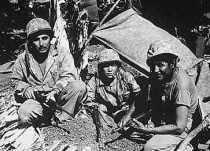 (l-r) Navajo Code Talkers Cpl. Oscar B. Gallup, Pfc. Chester Nez, and Pfc. Carl Gorman in Saipan, June 1944
(l-r) Navajo Code Talkers Cpl. Oscar B. Gallup, Pfc. Chester Nez, and Pfc. Carl Gorman in Saipan, June 1944
Wikipedia
Chester Nez (January 23, 1921 – June 4, 2014) was an American veteran of World War II. He was the last original Navajo code talker who served in the United States Marine
Corps during the war.[1][2][3]
Early years
Nez was born in Chi Chil Tah, New Mexico, to the Navajo Dibélizhiní (Black Sheep Clan) of the Tsénahabilnii (Sleeping Rock People). He was raised during a time when there were difficult relations between the
U.S. government and the Navajo Nation. His mother died when he was only three years old. One day a strange Mexican man went
to Chester's house and told his father about free boarding school. Nez recalled children often being taken from reservations, sent to boarding schools, and told to not speak the Navajo language. It was from one of the schools, in Tuba City, Arizona,[4] that Nez was recruited into the Marine
Corps.[1][2][3][5]
Code talker
Nez kept his decision to enlist from his family and lied about his age to meet enlistment requirements. He was assigned to the 382nd Infantry Regiment at Camp Pendleton in California where he and 28 other Navajo were tasked with creating a code for communications during WWII. The Navajo language was chosen because its syntax and
tonal qualities were nearly impossible for a non-Navajo to learn, and it had no written form. Nez stated the developers used everyday words, in order to easily memorize and retain them. In 1942, he
was among the code talkers to be shipped out to Guadalcanal, where they worked in teams of two—one to send and receive, the
other to operate the radio and listen for errors. Nez also fought in Bougainville, Guam, Angaur and Peleliu. He was honorably discharged as a Private First Class in 1945 and returned to serve stateside in
the Korean War from which he was discharged as a corporal.[1][2][3] Read more
Chester Nez, 93, Dies; Navajo Words Washed From Mouth Helped Win War - New York Times
Chester Nez, 93, Dies; Navajo Words Washed From Mouth Helped Win War
The New York Times
By MARGALIT FOX
June 5, 2014
To the end of his life, Chester Nez recalled the first message he sent over the radio while serving at Guadalcanal: "Enemy machine gun nest on your right.
Destroy."
Receiving the message, American forces eliminated the threat.
Mr. Nez, a former United States Marine who died on Wednesday at 93, had sent the message not in English but rather in a code he had helped create. It originally went much
like this: "Anaai (Enemy) naatsosi (Japanese) beeldooh alhaa dildoni (machine gun) nishnaajigo nahdikadgo (on your right flank). Diiltaah (Destroy)."
The code was fashioned from Navajo, the language that Mr. Nez grew up speaking, was later barred from speaking and still later helped craft into a military code so
impervious that it helped the United States secure victory in the Pacific in the summer of 1945.
Mr. Nez was the last surviving member of the 29 original Navajo code talkers, who at the urgent behest of the federal government devised an encrypted version of their
language for wartime use. They and the hundreds of Navajos who followed them into battle used that code, with unparalleled success, throughout the Pacific theater.
Not fully declassified until 1968, the Navajo code remains the only oral military code that has never been broken. read more
- Last Of The Navajo 'Code Talkers' Dies At 93, NPR.org
- Chester Nez, last of original Navajo code talkers of World War II, dies, CNN.org
- Remembering the last of the original Navajo Code Talkers, AZCentral.com
- Chester Nez, last of WWII's original Navajo code talkers, dies at 93, L.A. Times
Chester Nez, last of WWII's original Nav[...]
Adobe Acrobat document [40.8 KB]
Indian Education for All, Model Teaching Unit. Joseph Bruchac’s Code Talker: A Novel About the Navajo Marines of World War Two.
Link to online information
Model Teaching Unit for Middle_Code Talk[...]
Adobe Acrobat document [1.2 MB]
Middle_Code Talker A Novel About the Nav[...]
Adobe Acrobat document [7.2 MB]
Wikipedia
Code talkers are people in the 20th century who used obscure languages as a means of secret communication during wartime. The term is now usually associated with the United States soldiers during the world wars who used their knowledge of Native American languages as a basis to transmit coded messages. In particular, there were approximately 400–500 Native Americans in the United States Marine Corps whose primary job was the transmission of secret tactical messages. Code talkers transmitted these messages over military telephone or radio communications nets using formal or informally developed codes built upon their native languages. Their service improved the speed of encryption of communications at both ends in front line operations during World War II.
The name code talkers is strongly associated with bilingual Navajo speakers specially recruited during World War II by the Marines to serve in their standard communications units in the Pacific Theater. Code talking, however, was pioneered by Cherokee and Choctaw Indians during World War I.
Other Native American code talkers were deployed by the United States Army during World War II, including Lakota,[1] Meskwaki, and Comanche soldiers. Soldiers of Basque ancestry were also used for code talking by the U.S. Marines during World War II in areas where other Basque speakers were not expected to be operating. read more
Navajo Code Talker Samuel Tso Leaves Legacy
Code Talker Leaves Legacy of Education, Service
Kelly Koepke
5/20/12
Educator, father, grandfather and respected elder, Samuel Tso, passed away May 9 in Farmington, New Mexico at age 89. One of the founding members of the Navajo Code
Talker Foundation and its Vice President for more than 10 years, Tso, of Lukachukai, Arizona, was a Code Talker in World War II.
Navajo Nation President Ben Shelly ordered the Navajo Nation flag flown at half-staff from May 10 through May 14 to honor Tso for his service to the Navajo Nation and his
country in World War II.
"The Navajo Nation has lost another Code Talker and that saddens my heart. The Code Talkers have brought great pride to our Nation and the loss of Samuel Tso saddens
not only myself, his loss saddens the Navajo Nation. On behalf of the First Lady, the Vice President, and the Navajo people, we offer our prayers, condolences and words of encouragement to the Tso
family. Samuel Tso was a true Navajo warrior," said President Shelly in a press release.
Yvonne Murphy, Secretary of the Navajo Code Talkers Foundation, wrote in an e-mail that, "The Navajo Code Talkers Foundation has lost a treasured member of its board of
directors. Mr. Tso ardently advocated to preserve the history and legacy of the Navajo Code Talkers and was determined to witness the final construction of the National Navajo Code Talkers Museum and
Veterans Center. He envisioned the museum to be a vehicle for educating future generations, nationally and internationally, of the Navajo Code Talkers’ unique ‘secret weapon’ of military warfare
communications developed using the Navajo Language. His fight to keep America free during World War II will forever leave an indelible mark in American history. Mr. Tso’s legacy and story will be
forever remembered."
Being a Code Talker and sharing the important part that American Indians played in winning World War II was vitally important to Tso, said his son Ronald. "Dad was
interviewed in 1995 by National Geographic for a documentary film for the 50th anniversary of the battle of Iwo Jima, where Dad fought as a part of the Fifth Marine Recon Division."
In an account from that time, which Tso often told, he and another member of the unit were sent to search for machine gun emplacements. He was fearful and had a dream in
which he saw a woman in buckskin. She gave him a necklace made of cedar beads and told him not to be afraid, because the necklace would protect him. On the day of the mission, Tso received a letter
with no return address. It was a cedar bead necklace.
"After he received that," continues his son, "He had no fear, because he knew he would be protected. They went in and got there during a time when the Japanese machine
guns were quiet. They got there unscathed, got the artillery called in, and got back out of the area safely."
Tso’s daughter-in-law Danita Washington says that Tso was an inspiration to many. "Samuel was an educator foremost, because he believed that without an education, no one
could go anywhere. Samuel was the first in his family of 13 children to go to school and into the military. All the young ones aspired to be like grandpa, because of his military service and
encouragement of them to go to school. Many of his children, nieces and nephews went into the military because of him. Same way with education – many are teachers or in medical fields. He’s leaving a
wonderful legacy."
Samuel Tso was born June 22, 1922, at Black Mountain near Many Farms, Ariz. He was Zuni Tachiinii and born for Nakai Dine’e. According to Ronald Tso, Samuel received a
Bachelor’s degree in elementary education from Utah State University. He taught at Intermountain Indian School in Brigham City, Utah, and was a teacher supervisor and principal at Lukachukai Boarding
School. He also received a Master’s degree from Arizona State University.
Funeral services took place May 16 with a Catholic mass at St. Isabel Catholic Church in Lukachukai, followed by a military service at the church’s cemetery. He is
survived by son Ronald Tso and daughter Yvonne Tso, three grandchildren and five great grandchildren. read more
Navajo Code Talker Joe Morris, Sr., National Hero
Navajo Code Talker and National Hero, Joe Morris Sr. Passes On
IndianCountry Today Media Network.com
by Brenda Austin
7/21/2011
Click here for our
feature story on the history of American Indian code talkers in the military.
Click here for our story of
90-year-old veteran Chester Nez, who keeps alive the story of Navajo code talkers.
Indian country lost one of the few remaining World War II Navajo code talkers when Joe Morris Sr., 85, passed away in Riverside, California on July 17. Morris, Navajo,
spent most of his adult life in Daggett, California, where he had a civilian job at the nearby military base, and he raised his daughter and two sons without ever giving up his heroic secret. It
wasn’t until 1968, when the military declassified the Navajo code-talker mission that he was able to tell his wife and family about what he had done in World War II.
Born in 1926 on the Navajo Nation Reservation at Indian Wells, Arizona, Morris had a harsh early life on the reservation. With no electricity or running water in the
family’s hogan, Morris, his three brothers and their sister slept on a dirt floor with sheepskins for warmth and comfort. At the age of 12 he started his only formal schooling, from a residential
school 70 miles from the reservation. Two years later his education came to an abrupt end when the school was converted into an internment camp after the Japanese bombed Pearl Harbor.
As the oldest of his siblings, Morris was responsible for tending the family’s horses and sheep. According to his daughter, Colleen Anderson, Morris’s grandfather would
wake him up very early every morning and tell him to care for the horses, which required running three or four miles. He would also tell Morris to wash himself in the snow because it would make him
strong. Anderson says her father used to laugh and say his grandfather was like a drill sergeant.
Morris decided he wanted to do something other than tend sheep for the rest of his life, so when he received his draft registration card, he put down that he was 18 years
old, even though he was just 17. He was drafted into the Marine Corps a few months later, in 1944, completed basic training and was then assigned to the Navajo Communications School at Camp Pendleton
in California. After spending five months learning the Navajo code, he was ready for combat—he spent two years with the 6th Marine Division 22nd Regiment in Guam, on Guadalcanal, Saipan, Okinawa and
in Tingstao, China. He was honorably discharged as a corporal in 1946.
Many years later, after the release of the movie Windtalkers in 2002, in which two U.S. Marines in World War II are assigned to protect Navajo code talkers, Morris was
often asked to speak at elementary and high schools, colleges, museums and military organizations. Anderson says her father was concerned that not enough people knew of the vital role code talkers
played in the war and he relished any chance to share his story.
Morris leaves behind his wife of more than 60 years, Charlotte, three children and three grandchildren. Anderson says Morris’s children would like him to be remembered as
a humble man, a quiet person and a good family man who gave his children a wonderful childhood. read more


